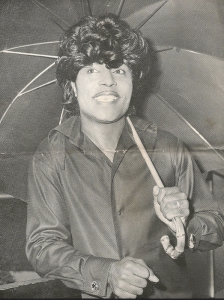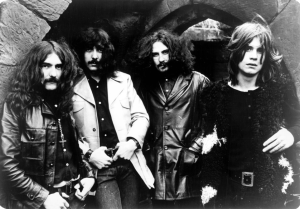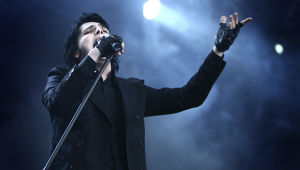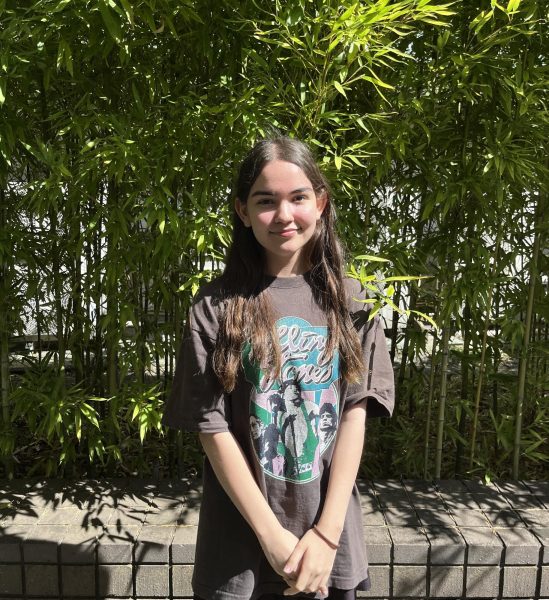“They’re shoe-shoes, silly,” answered David Bowie in a 1973 interview when he was asked whether his pink high heels were “men’s shoes, women’s shoes, or bisexual shoes.”
When one thinks of fashion, runways and magazines come to mind, but fashion is not limited to models. It is a method of self-expression for all identities. For rock musicians, fashion as a means of making a statement has a long and colorful history.
Despite the stereotype of all black garbs and deafening sounds, rock fashion started off rather simply. From Buddy Holly to early Elvis Presley, one thing all rock artists in the first half of the 1950s had in common was their conservative style. With tight tuxes and slicked hair, conformity was of the essence. But it was quickly changing. One man, Little Richard, departed from this standard.

Known for his flamboyant stage persona, Little Richard paved the way for many upcoming rock artists. Unlike his contemporaries, Richard wore a pompadour haircut and even dared to use makeup, something eccentric for his time, inspiring other musicians to develop their own distinct styles.
Elvis himself would later break away from the standard, donning his iconic white jumpsuit embroidered with careful stitching and flaring hems, while performing suggestive dance moves. Despite society’s desire for uniformed modesty, Elvis’ pioneering hip swings and air thrusts fostered a discussion around sexuality, a taboo topic in the 1950s.
More change came in the 1960s with the “British Invasion” of bands such as The Beatles and The Kinks. Both groups started with identical bowl cuts and gray suits, but would deviate near the end of the decade, wearing more vibrant colors, especially with the growing popularity of psychedelia. This shift away from 50s’ modesty paralleled the immense social upheaval—the Civil Rights Movement and Vietnam War protests, for example—that occurred in the 1960s.

The Rolling Stones, another band that broke out during the 1960s, began just as their predecessors, dressing conservatively in matching outfits and hairstyles. As the band rose to stardom though, they used a combination of psychedelic color schemes and vibrant eye makeup, proving that it was a new era of fashion.
Mick Jagger, The Rolling Stones’ lead singer who would often wear thick black eyeliner and brightly colored eyeshadow, landed a place in the Rock and Roll Hall of Fame in 1989. Guitarist Keith Richards, with his smokey eye makeup, rainbow scarves, and animal printed blouses, was also inducted into the Hall of Fame the same year.
And while The Rolling Stones bathed in their success, another struggling artist was slowly making his rise in the 1970s.
David Bowie employed the theme of space in his music, composing songs such as “Life on Mars,” using his famed persona, Ziggy Stardust. Bowie experimented with cosmic-inspired makeup and costumes for Stardust, while using a complete contrast of pure black and white for another character, the Thin White Duke. Bowie was not set to just one aesthetic; he constantly created new characters to express that his individuality was not bound by one trait. He promoted the idea that one can be multifaceted with their personality.
The 70s were not limited to Bowie. In fact, the decade redefined rock fashion for years to come. KISS performed with full faces of makeup, and like Bowie, each member of the band created their own characters. They wore face paint resembling demons or aliens and heels as high as seven inches.

With one of the most iconic riffs of all time on the song “Paranoid,” Black Sabbath stormed onto the rock scene in 1970. Pioneers of heavy metal, Black Sabbath introduced this new subdivision of rock to America. The band’s fashion consisted of black leather coats and their signature cross necklaces. Black Sabbath created a blueprint for many future heavy metal bands.
Come the 80s, rock bands continued to use makeup, but shifted toward a more dark and edgy style. Groups like Guns N’ Roses began growing out long locks of hair and applying more intense eye makeup. Metallica’s black leather jackets, ripped black jeans, and thrashing music typified the decade’s heavy metal scene.
The 1990s gave way to grunge rock, a fusion of punk rock and heavy metal. Surprisingly, with the beginning of grunge, the use of eye makeup declined. Often considered the most famous band of the 90s, Nirvana helped create the trend of baggy clothing and long hair, but never focused on makeup with the exception of Kurt Cobain, Nirvana’s lead singer. The previous fashion trends from the 1980s began to melt into calmer yet still prominent expressions of character, mimicking the relative peace of the 90s with the end of the Cold War.

Mirroring the rapid technological advancements and increased societal turmoil of the 2000s, the rise of emo rock brought about significant change to the fashion trends of the rock genre. Bands like My Chemical Romance popularized choppy dyed hair, black royal suits, and sooty black eye makeup, a look that was especially appealing to the younger generation.
However, other rock bands such as The Strokes began to tone down the flair and wore simple outfits of leather jackets, T-shirts, and jeans. This paralleled their more relaxed, indie music style.
Fashion has been a part of rock and roll since its inception and continues to be important for rock artists today. Whether it be a simple gray suit or a rainbow galactic one piece, each style indicates a distinction between musicians and illuminates the parallels between art and society.


